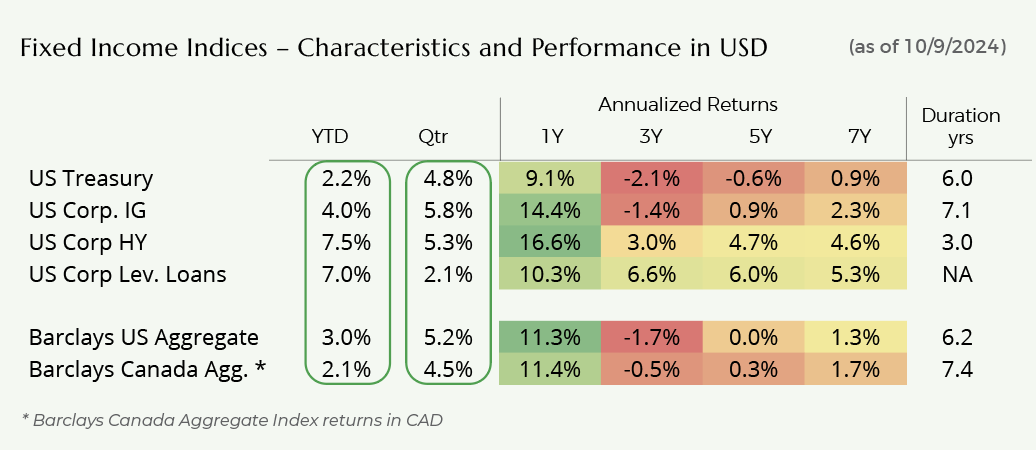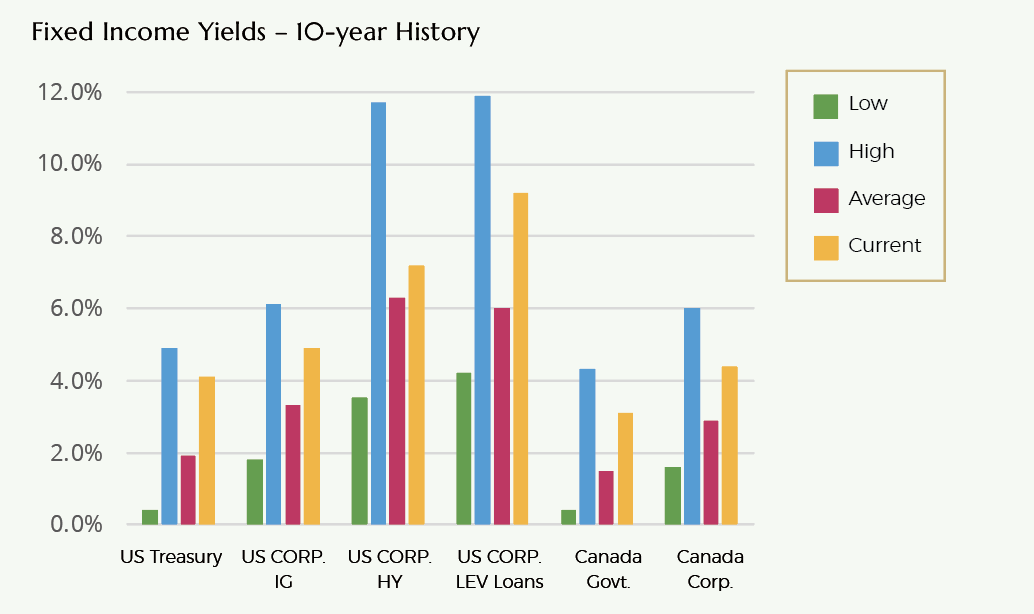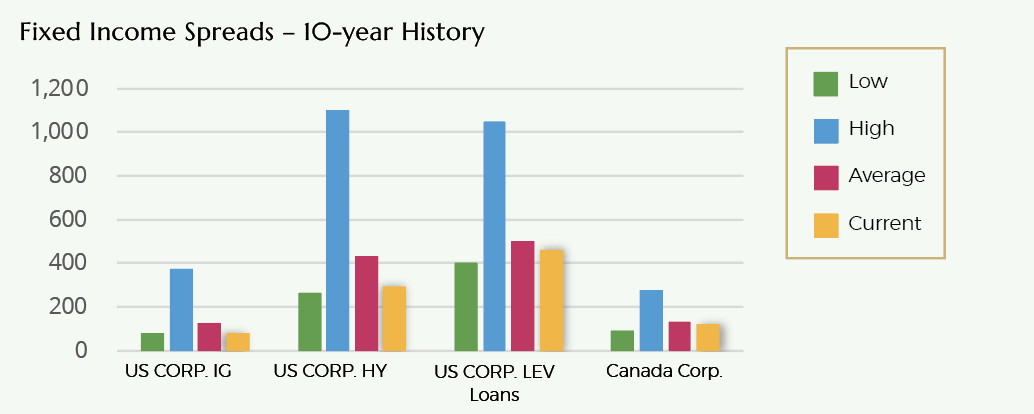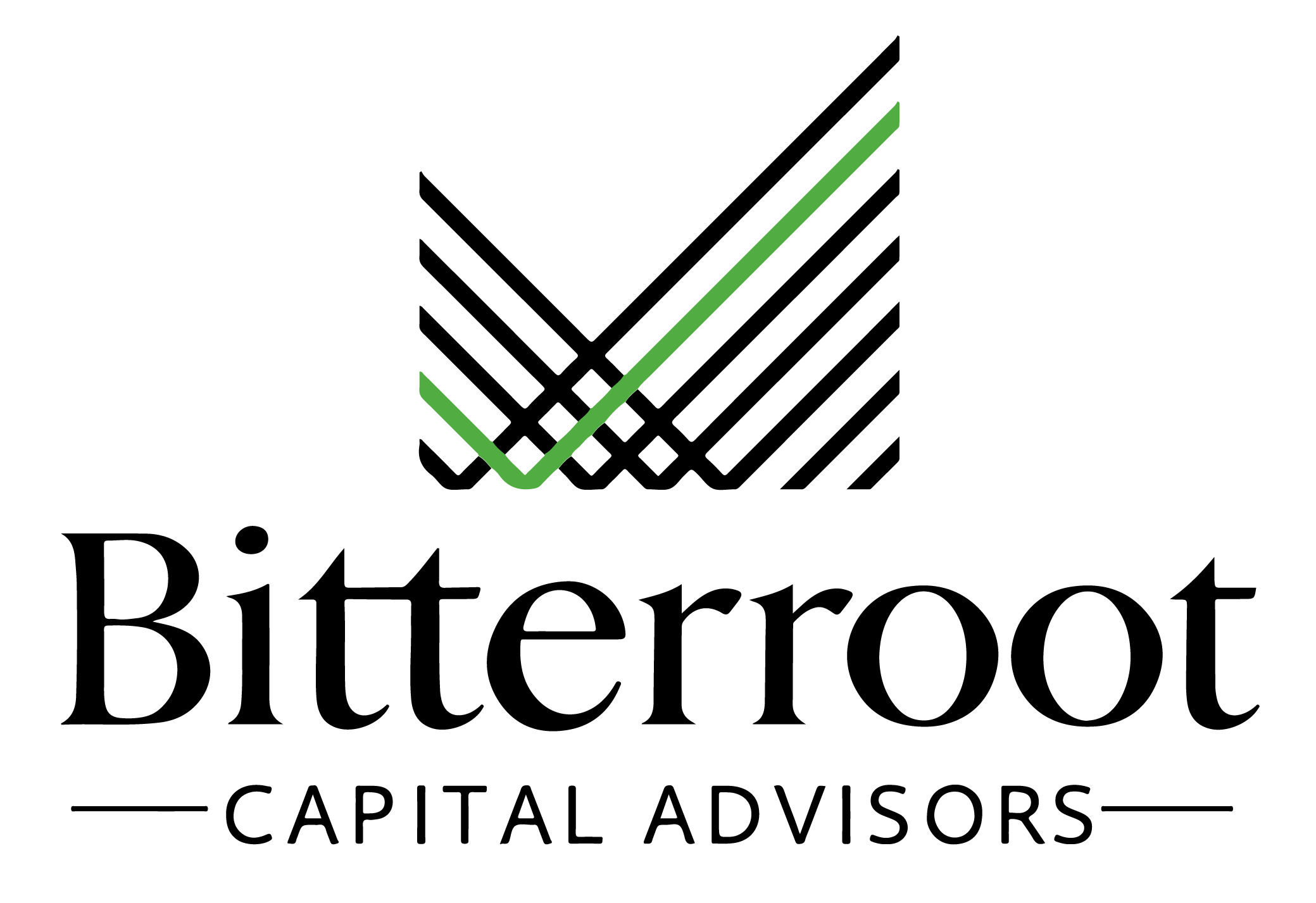Performance
Safe fixed income assets, including government bonds and investment-grade corporate bonds, saw strong appreciation in Q3, driven primarily by declining interest rates.

Drivers of Rate Declines
The decline in interest rates was fueled by better-than-expected inflation data, prompting the Federal Reserve to cut the Federal Funds rate by 50 basis points (bps) in September, marking the first rate cut of the current cycle. The Fed’s median forecast anticipates an additional 50 bps of cuts by year-end and a further 100 bps in 2025.
Short-term bond yields (2-year maturities) fell by 110 bps, while longer-term yields (10-year maturities) declined by 60 bps during Q3. However, since the end of September, yields for both short- and long-term bonds have risen by 30 bps due to stronger-than-expected employment data.
High-Yield Bonds & Leveraged Loans
Both high-yield bonds and leveraged loans delivered strong performance in Q3 and year-to-date (YTD).
High-yield bonds benefited from high coupon rates and tightening credit spreads. Lower-quality, riskier high-yield bonds significantly outperformed higher-quality bonds as economic growth and corporate earnings proved more resilient than anticipated.
CCC-rated bonds, the lowest-quality category, surged by 11.6% in Q3, vastly outperforming BB-rated (+4.6%) and B-rated bonds (+4.3%). YTD, CCC-rated bonds have appreciated by 15.6%, well ahead of the gains seen in BB-rated (+6.7%) and B-rated bonds (+6.1%).
Leveraged loans, which are floating-rate instruments, have benefited from high coupon rates driven by elevated SOFR base rates combined with stable credit spreads. However, the base rate has declined from 5.3% to 4.8% following the Fed’s September rate cut, and further declines are expected over the next 12-18 months. As a result, leveraged loan returns are likely to decrease moving forward.
Valuation
Safe fixed-income yields, including government and investment-grade corporate bonds, continue to offer attractive returns in the current environment.


Current Yield Landscape
U.S. Treasuries are yielding approximately 4.2% for 1-year maturities, 3.9% for 2-year maturities, and 4.1% for 10-year maturities. U.S. corporate investment-grade bonds are yielding around 4.9%, with the risk of default considered very low.
Tight Spread Premiums
Both investment-grade (IG) and high-yield (HY) bond spreads remain tight, supported by strong corporate earnings performance despite the elevated interest rate environment. Currently, IG spreads are at 81 basis points (bps), while HY spreads are at 283 bps, both well below their 10-year averages of 125 bps and 425 bps, respectively.
Historically, spreads have widened significantly during recessions, reaching approximately 200 bps for investment-grade bonds and 800 bps for high-yield bonds. However, the quality of the high-yield index is stronger today than in past downturns. Given the high base rates, it is unlikely that spreads will expand to previous recessionary levels, even if economic activity slows substantially.
Competitive Dynamics in Lending
The lending landscape is becoming more competitive, especially for large corporate borrowers, while conditions remain more favorable for middle-market lenders.
Large Corporate Borrowers: These companies continue to enjoy ample credit availability from banks and large private lenders. After a period of reduced activity from late 2022 to mid-2023, large banks have returned to the leveraged loan market, leading to a 125-150 bps contraction in new issuance spreads. However, this increased activity has resulted in weaker covenant packages.
Middle-Market Borrowers: Lower-middle-market and middle-market companies face more significant challenges in accessing capital. With regional banks pulling back from lending, spreads for these borrowers have narrowed less significantly (by only 75-100 bps) compared to larger corporate borrowers, reflecting the ongoing constraints in this segment.



